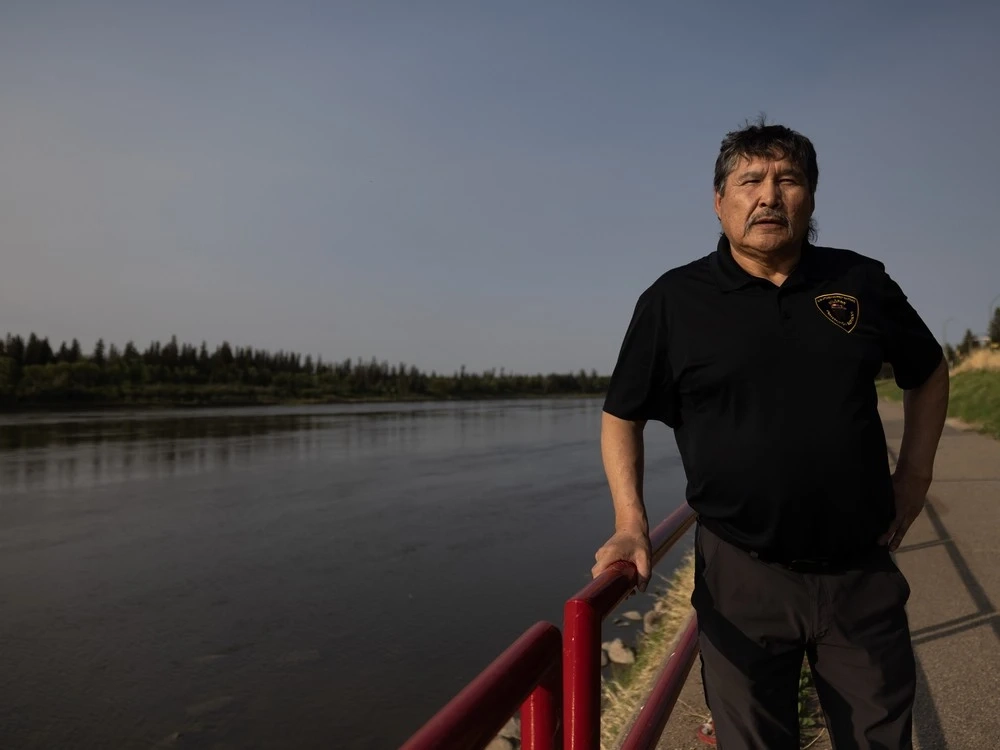 Prince Albert Grand Council grand chief Brian Hardlotte is calling on the Saskatchewan government to revise its disaster assistance program to include trapline cabins, following one of the most destructive wildfire seasons in the province's history. Photo by KAYLE NEIS /Regina Leader-Post
Prince Albert Grand Council grand chief Brian Hardlotte is calling on the Saskatchewan government to revise its disaster assistance program to include trapline cabins, following one of the most destructive wildfire seasons in the province's history. Photo by KAYLE NEIS /Regina Leader-Post Last week I travelled up to Weyakwin Lake where we have a small cabin. In 2017, the area was devastated by a wildfire that almost destroyed the Ramsey Bay subdivision. Fortunately, the brave volunteer firefighters from the south along with the northern firefighters were able to save the subdivision.
 THIS CONTENT IS RESERVED FOR SUBSCRIBERS ONLY
THIS CONTENT IS RESERVED FOR SUBSCRIBERS ONLY Subscribe now to read the latest news in your city and across Canada.
- Unlimited online access to articles from across Canada with one account.
- Get exclusive access to the Saskatoon StarPhoenix ePaper, an electronic replica of the print edition that you can share, download and comment on.
- Enjoy insights and behind-the-scenes analysis from our award-winning journalists.
- Support local journalists and the next generation of journalists.
- Daily puzzles including the New York Times Crossword.
Subscribe now to read the latest news in your city and across Canada.
- Unlimited online access to articles from across Canada with one account.
- Get exclusive access to the Saskatoon StarPhoenix ePaper, an electronic replica of the print edition that you can share, download and comment on.
- Enjoy insights and behind-the-scenes analysis from our award-winning journalists.
- Support local journalists and the next generation of journalists.
- Daily puzzles including the New York Times Crossword.
Create an account or sign in to continue with your reading experience.
- Access articles from across Canada with one account.
- Share your thoughts and join the conversation in the comments.
- Enjoy additional articles per month.
- Get email updates from your favourite authors.
Create an account or sign in to continue with your reading experience.
- Access articles from across Canada with one account
- Share your thoughts and join the conversation in the comments
- Enjoy additional articles per month
- Get email updates from your favourite authors
This time, the fire came from the other direction and struck the previously burned area. The devastation is now complete. When an area is burned over by a wildfire, the trees are left standing, and they gradually fall over and nurture the soil as the new growth takes hold. In this case, the standing trees are completely wiped out. Only blackened stumps remain. In the space of eight years, we had two fires in the same location.
This years fire season has the potential to be the worst on record. Already more than two million hectares have been destroyed. Thats the equivalent of almost five Prince Albert National Parks. And the fire season isnt over.
Our people live and work within the boreal forest, whether hunting and trapping or working for the forest industry. Our people have generations of experience behind them and are now the ones most impacted by the wildfires.
This week, the Prince Albert Grand council sent out a media release pointing out the extent of the impact including loss of traplines and cabins across a wide swath of land. The First Nations impacted the most are the woodland Cree First Nations of Lac La Ronge, Peter Ballantyne and Montreal Lake. All have suffered extensive damage.
Their request to the province is that their people be included in the Provincial Disaster Assistance Program, PDAP. Under the current guidelines, trappers cabins dont qualify. Neither does the damage done to the trapline and loss of potential revenue. Instead, its a program that includes municipalities, homeowners, small businesses, and non-profit organizations.
This isnt a small item. Literally dozens of traplines and cabins have burnt, and it will have a serious impact on the people and the ecology. PA Grand Chief Hardlotte stated, The land is our economy, our education and our grocery store.
Further west, in the Ile a la Crosse area, the local Metis wanted to set up trapping block N-14 as a protected area. It contains a rich diversity of lakes, forests and swamps, ideal for medicines, waterfowl and other fauna. The area is 22,000 square kilometres in size and home to more than 100 traplines. It is also home to the endangered woodland caribou. These animals live in old growth forest and much of it has been either burned or logged commercially.
In 2023, a wildfire burned about half of the area. This year, the remaining portion burned, leaving about 10 per cent of the original trapping block.
In the past, it seemed as if the great boreal forest was endless. But now, as we look across the blackened landscape, it becomes obvious we have reached a tipping point and the beautiful mature forest that stretched into the horizon is a thing of the past.



